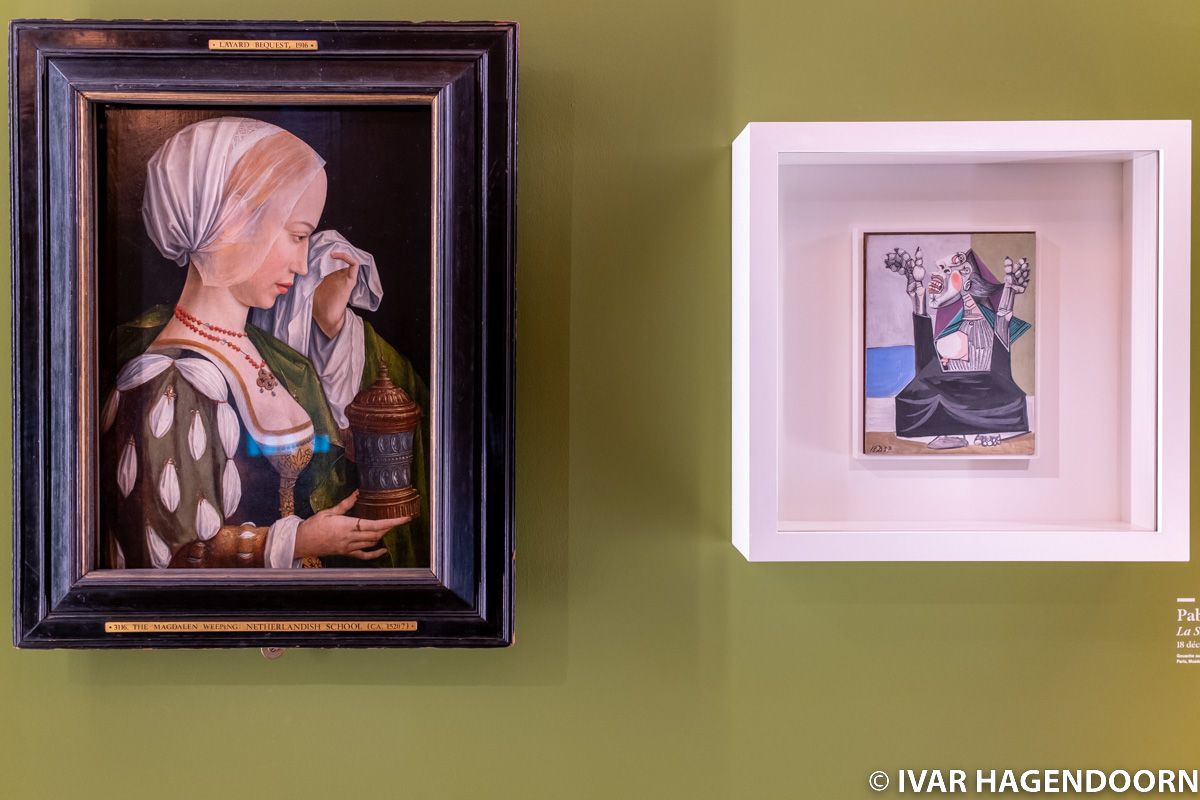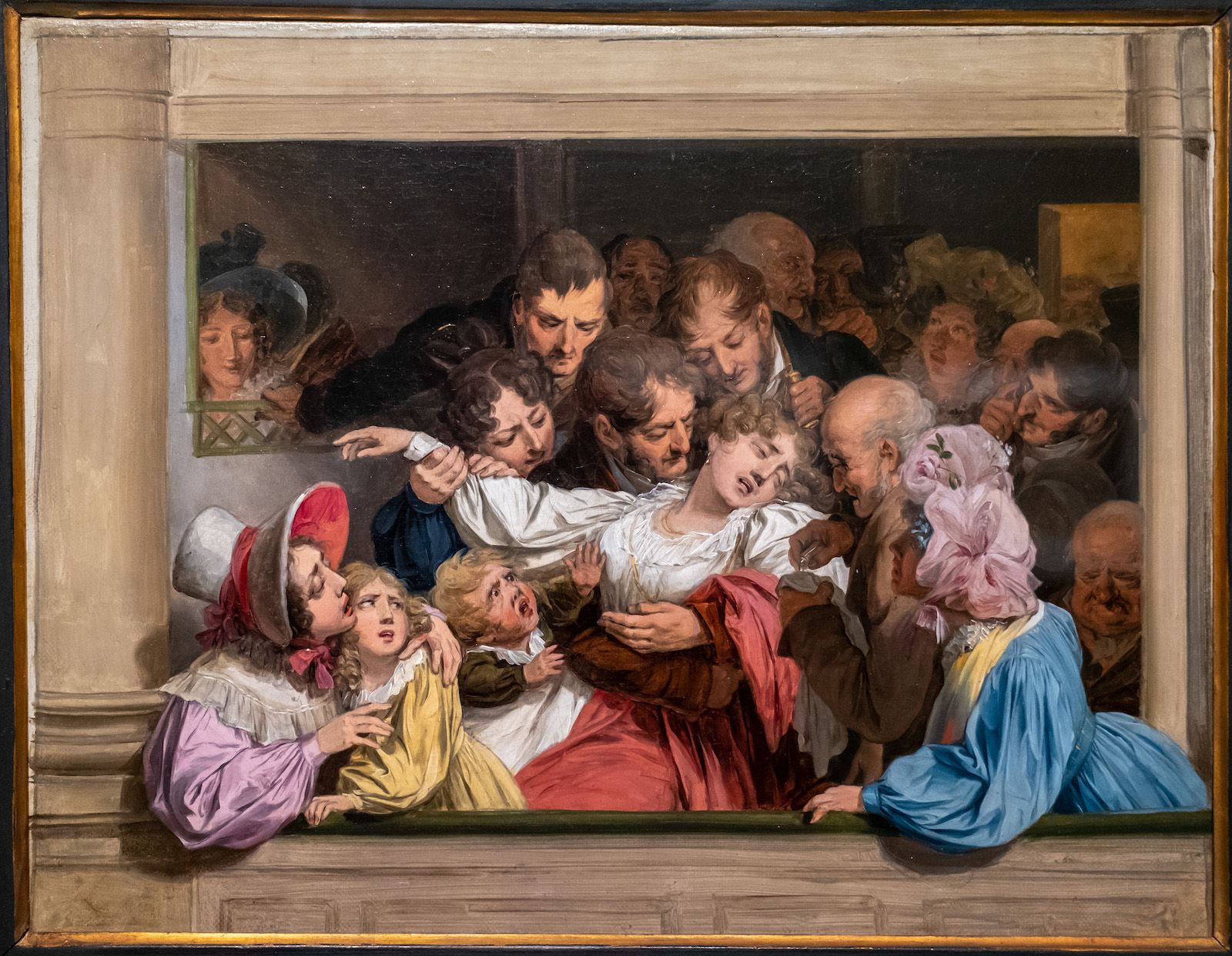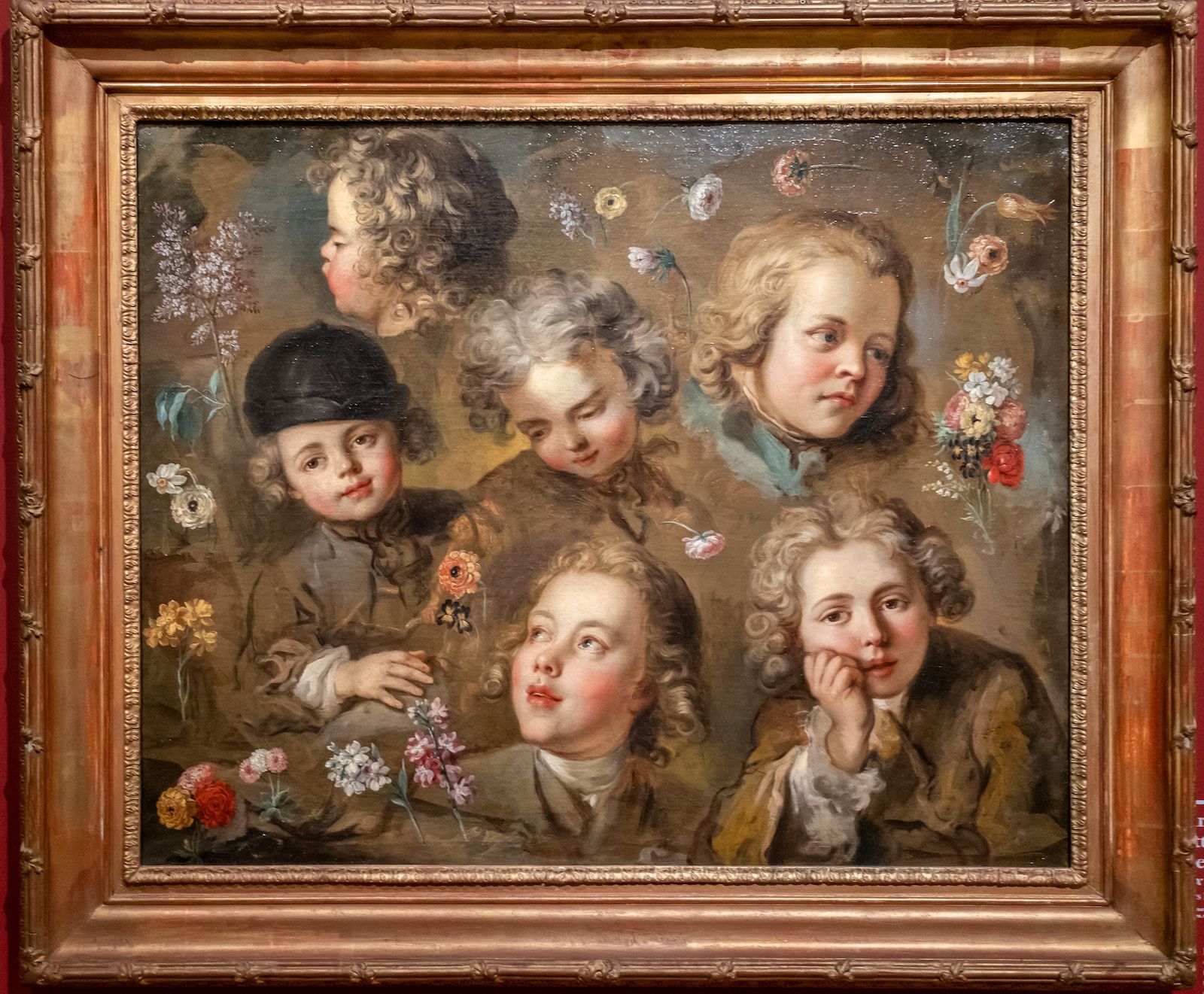
At the entrance to the exhibition "Le Théatre des Émotions" (The Theatre of the Emotions) at the wonderful Musée Marmottan Monet in Paris, the visitor is greeted by two paintings. One shows an otherwise expressionless woman holding a piece of cloth against her eye, suggesting that she is crying (Maître de la Légende de Sainte Madeleine, "Sainte Madeleine en pleurs", ca. 1525). The other shows a woman, her face distorted, her hands like claws, reaching towards the sky (Picasso, "La suppliante", 1937). These two paintings, the one subdued, the other full of expression, separated by four centuries, set the stage for a fascinating journey through art history.
"The Theatre of the Emotions" was originally scheduled for Spring 2020, but had to be postponed because of the Covid-19 pandemic. I’m happy to see that the organizers were able to reschedule the exhibition.
Bringing together eighty works from the Middle Ages to the present day the exhibition retraces the history of the representation of the emotions. From pleasure to pain and from suffering to joy the exhibition explores the various ways in which artists have sought to represent the repertoire of human sensibility. As such the exhibition is also a history of the emotions, or the passions as they were once called.
The exhibition is divided into various sections, starting in the Middle Ages at a time when faces in portraits seemed expressionless and when an object, such as a flower or a skull, symbolized emotion. It wasn’t until the Renaissance that painters began to represent the psyche, the interiority, of their models, giving way to some of the first masterpieces of portraiture, such as the Mona Lisa by Leonardo da Vinci, a 17th century copy of which is included in the exhibition. Also included is an extraordinary painting by Johannes Moreelse of "Marie-Madeleine repentante" (ca. 1630), which shows a woman with a nude torso, her hands leaning on a skull. To his contemporaries this must have been a meaningful painting, full of symbolism, but when you pause to think about it, it is quite odd.
The notion that the experience of emotion is expressed through facial features finds its culmination in the posthumous publication of Charles Le Brun’s "Méthode pour apprendre à dessiner les passions" (Method for learning to draw the passions) (1698). It was hugely popular at the time, translated into multiple languages and reprinted several times. Others would extend Le Brun’s ideas to the entire body and a vocabulary of gestures. The resulting paintings look theatrical, if not caricatural, and the emotions appear exalted as in Jean-Honoré Nicolas Fragonard’s "Le Verrou" (1777-1778), which shows a couple in a frenzy in front of an unmade bed. An apple, as yet uneaten, on a bedside table, a last vestige of symbolism, drives the message home for those who may have missed it.

It is a joy to see three paintings by Louis Léopold Boilly, one of which features a multitude of faces in all kinds of exaggerated expressions, including an old favourite of mine, "L’Effet du mélodrame" (1830), which shows a woman fainting in the loge of a theatre, presumably because she’s affected by the events on stage, and not because of poor air quality.
With the advent of romanticism artists turned further inwards while giving outward expression to the inner turmoil of the mind, from madness to bliss. Whereas Le Brun believed that he had uncovered the universal expression of emotions, romantic artists focused on the individual expression of emotion.
Le Brun’s ideas would live on, for example in Nadar’s mid-19th century photographs of Pierrot and in the experiments of Duchenne de Boulogne, who applied electrical stimulation to the facial nerves in an effort to establish a corpus of the facial expression of emotions. In one series of experiments Duchenne de Boulogne sought to reproduce Lady Macbeth with different expressions of cruelty. The work of Duchenne de Boulogne and that of Charles Le Brun and Franz Messerschmidt, some of whose sculptures of facial expressions are also included in the exhibition, shows the enduring interaction between art and science in the study of emotion.
From the mid-19th century onwards artists no longer only sought to represent the emotions, but also to give expression to their own emotions. And as the moral climate loosened artists also began to portray lust, as in the work of Egon Schiele, Félicien Rops and Hans Bellmer.
The early 20th century saw a revolution in the study of the mind. While much of his work is discredited today, Freud had a major impact on the arts, which is perhaps most visible in surrealism, especially in the work of Salvador Dali, who was fascinated, if not obsessed, by the work of the godfather of psychoanalysis.
Of course, the 20th century also saw the horrors of two world wars, the holocaust, the gulag and the atom bomb. In a variety of ways and using an ever increasing range of media artists sought to give expression to these horrors. The exhibition includes a powerful painting by Martine Martine, "Grandes mains rouges II" (1985), which only shows crawling arms, the hands and fingers reaching out to above.
There is much to be enjoyed at this small but exquisite exhibition. The organizers have brought together a fascinating collection of artworks. From the aforementioned works by Picasso, Louis Léopold Boilly and Dürer to a wonderful, dreamy 18th century collage of children portraits by an anonymous artist and the understated but emotionally charged "The Lovers" (1888) by Émile Friant.

Le Théatre des Émotions is at the Musée Marmottan Monet, Paris until 21 August 2022.
If you can’t make it to the exhibition, it comes with a richly illustrated catalogue, which can also be read separately.